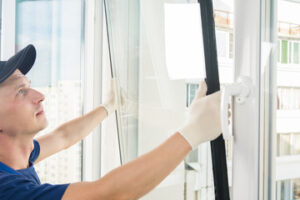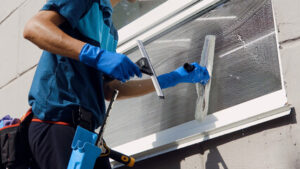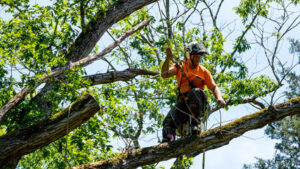The Right Replacement Windows Can Make Your Home More Comfortable, Sound Quieter, and Look Better.

Before you dive into researching the many options available, ask yourself some basic questions to determine your goals, wants and needs. This will save time and help you find the perfect window for your home. For professional guidance, reach out Your Home Exterior Solutions.
Whether your windows are aging or not, replacing them with energy-efficient models is a great way to lower your utility bills. In fact, replacing old single-pane or double-pane windows with ENERGY STAR certified windows can reduce your heating and cooling costs by up to 20%, depending on the type of window you choose.
In addition, ENERGY STAR certified windows have better insulation than older windows, which helps prevent drafts, condensation and noise infiltration. The windows you choose will be based on the size and style of your current window openings, and your contractor will take accurate measurements to ensure the new windows fit properly.
Aesthetics are also a key consideration when choosing replacement windows, and you can find a wide variety of styles from which to choose. From frame materials to window shapes and grille patterns, you can find a style that perfectly complements your home’s interior and exterior aesthetics.
Another benefit of replacement windows is that they can be installed without major alterations to your home’s existing frames, siding or trim. This is especially beneficial if you’re working within a limited space, or have carefully curated the look of your home’s exterior features.
Having your replacement windows installed professionally can be more cost-effective than a full remodel, and can still provide a high return on investment if you decide to sell your home in the future. Potential buyers will be impressed by your energy-efficient, aesthetically pleasing new windows, and may offer a higher price for your home.
Aside from the energy savings, installing new windows can significantly improve your quality of life at home. Replace draughty windows and you’ll find your living spaces feel warmer, quieter, and more comfortable than ever before. You’ll rest easier knowing you and your loved ones can enjoy your home’s comfort for years to come.
Aesthetics
Whether your home is modern or traditional, new windows can elevate your property’s aesthetic by creating a harmonious blend with the rest of your architectural design. Aside from boosting energy efficiency, they can also make rooms feel more spacious and vibrant. With a range of frame materials, grille patterns, and colors available, you can find replacement windows that perfectly match your home’s style.
Aside from their aesthetically pleasing appearance, new windows are designed with your safety and security in mind. Many of them feature advanced locking mechanisms, shatterproof glass options, and fortified frames that can withstand forced entry attempts. These features will protect your family from intruders while giving you peace of mind.
Replacement windows are also a great way to update the exterior of your home. Aside from the fact that they look great and offer breathtaking views, they can also add value to your home by enhancing its curb appeal. They can also make your home more energy efficient by reducing heat loss and regulating indoor temperatures.
Upgrading your home’s windows doesn’t have to be a costly or complicated affair. In fact, the simplest changes can significantly influence your property’s visual appeal and market value. Aside from improving a house’s interior aesthetic, replacement windows also improve the quality of light and provide ventilation. They can also boost your property’s overall value by attracting prospective buyers.
When you are looking to invest in a project that will increase the overall value of your home, it is important to choose the right contractor for the job. A qualified and reputable company will ensure that the installation process is safe, seamless, and efficient. They will also use high-quality materials that are long-lasting and durable, ensuring that your windows last for years.
Replacement windows are one of the most significant upgrades you can make to your property. Not only will they increase the value of your home, but they can also make it more comfortable and appealing to you and your family. If you are thinking of buying a home in the future, it is worth upgrading its windows to improve its aesthetic and functionality.
Low Maintenance
When you choose to replace your windows, it’s important to consider the materials and features that will be best for you. Many of the most popular replacement windows are constructed from vinyl, fiberglass or aluminum. Each offers its own unique blend of beauty, durability and energy efficiency. However, vinyl windows are considered the most low-maintenance option, due to their easy cleaning and resistance to fading, warping or rotting. They are also more affordable than wood windows.
Energy-Efficient Windows
Choosing a replacement window that has an energy efficiency rating of A+ is an excellent way to reduce your home’s energy costs and make your space more comfortable year-round. These windows minimize heat loss and drafts, while also blocking out unwanted noise to create a quieter living environment.
Another feature that makes energy efficient replacement windows a great choice is their ability to limit damaging UV rays from entering your home. This helps to preserve the look of your furniture, carpets and other interior surfaces while reducing fading caused by excessive sunlight.
The frame material of your new replacement windows will also play a role in their overall energy efficiency and maintenance requirements. Fiberglass and aluminum are both durable, cost-effective options that offer superior insulation properties. These frames can be painted to match the style of your home, making them an ideal choice for homeowners looking for a combination of affordability, energy efficiency and attractive design.
Wood is a more traditional frame material that requires regular painting, staining and sealing to protect against water and weather damage. However, with proper care, wooden replacement windows can last for decades. Regardless of the frame material you choose, it’s essential to routinely inspect your windows and make repairs as necessary. Check for loose or broken hardware, water leaks and air infiltration, as well as signs of mold and mildew.
Investing in low-maintenance replacement windows is an excellent way to improve the comfort and aesthetics of your home while saving time on repetitive chores. This frees up your time to focus on the things that matter most, such as spending quality time with family and friends or pursuing your passions.
Easy Installation
Unlike new construction windows that are built to fit into the frame of your home, replacement windows are designed to be installed into an existing window opening. As a result, they are more affordable and less disruptive to your home’s structure.
If you want to make your home look new again, feel more comfortable, and enjoy a lower heating and cooling bill then replacing the windows is an excellent way to do all of these things. Replacement windows are available in a variety of styles and designs to meet any homeowner’s taste and budget. You can even choose from a wide selection of energy efficient replacement windows that are available to help reduce your home’s energy consumption and utility bills.
A new window will keep your home safe and secure. Many of our windows feature high security locking as standard to prevent intruders from entering your home.
The installation of replacement windows is a relatively simple process. The first step is to remove the old window. You will need to carefully pry the glass away from the frame, making sure not to break the seal. The glass is held in with a strip of adhesive on one side and a piece of wood called a glazing bead on the other. You will need to use a heat gun to soften the adhesive and a putty knife to work it loose. Once the adhesive is free you can slide the glass out of the frame.
Once the frame is empty, you will need to prep it for the new window. This includes removing the trim and moldings. You will also need to remove the jamb liners, which can be done by prying them off. You may need to chisel and scrape the paint from the inside of the frame to expose the wood and make it ready for installation.
If the frame is rotted or has been compromised in any other way it will need to be repaired before installing the new window. Then the window can be inserted into the opening with shims to keep it centered and level. If the frame is in good condition then it should be nailed to the sill and house framing using construction nails. Once the nail fins have been inserted it is important to fill them with low expanding foam to prevent air leakage and help defend against future problems.








